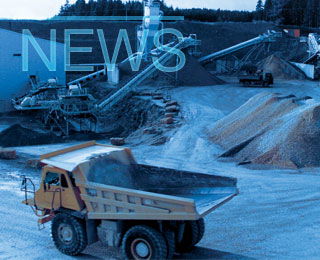The use of ground granulated blastfurnace slag (GGBS) to reduce greenhouse gas (GHG) emissions in concrete needs to be carefully considered, recommends a new paper from UK-based The Institution of Structural Engineers (IStructE). For many years GGBS has been specified as a partial replacement for clinker in concrete due to its technical properties. More recently, reducing clinker with GGBS has become the ‘go-to’ method for decreasing the carbon intensity of concrete in the UK, as the production of GGBS results in far fewer GHG emissions than the production of the clinker that it replaces.
This latest paper demonstrates that GGBS is a limited and constrained resource that is almost fully utilised globally. Any increase in its use in one geographic location is highly likely to result in a reduction elsewhere. The authors concluded that any local increase in the amount of clinker substituted with imported GGBS is unlikely to decrease global GHG emissions – which means that GGBS should not be used in high proportions just in the hope of reducing GHG emissions.
Will Arnold, head of climate action at IStructE, led the project and co-authored the paper, and comments, “Our purpose is to explain that GGBS is not a silver bullet for GHG emissions in concrete production as our paper demonstrates global constraints in GGBS availability. As a material, GGBS needs to be carefully considered to ensure it’s being used efficiently, and in the most appropriate manner.”
The authors stress that this does not mean that GGBS use should cease altogether: such a move would increase global emissions as more clinker would need to be produced globally to compensate. A key recommendation is that global supplies of GGBS should continue to be fully utilised, and that GGBS should still be used, particularly where required technically. The authors recommend that GGBS should come from well-established supply chains.
Iva Munro, ConcreteZero lead at Climate Group, explains: “Alternative options beyond GGBS exist for reducing clinker usage and global GHG emissions – and engineers and designers should work with the supply chain to identify the best way to do this on each individual project.”
The paper recommends that designers, contractors and those along the supply chain ask three questions early in the design process to optimise GGBS use - do we need GGBS for technical reasons? Is there a well-established GGBS supply chain for our project? How else can we reduce concrete emissions?

Cement dispatches in Colombia down 7% in February
Colombia's cement market contracted 6.6 per cent YoY in February 2025 as dispatches fell to 0.96...